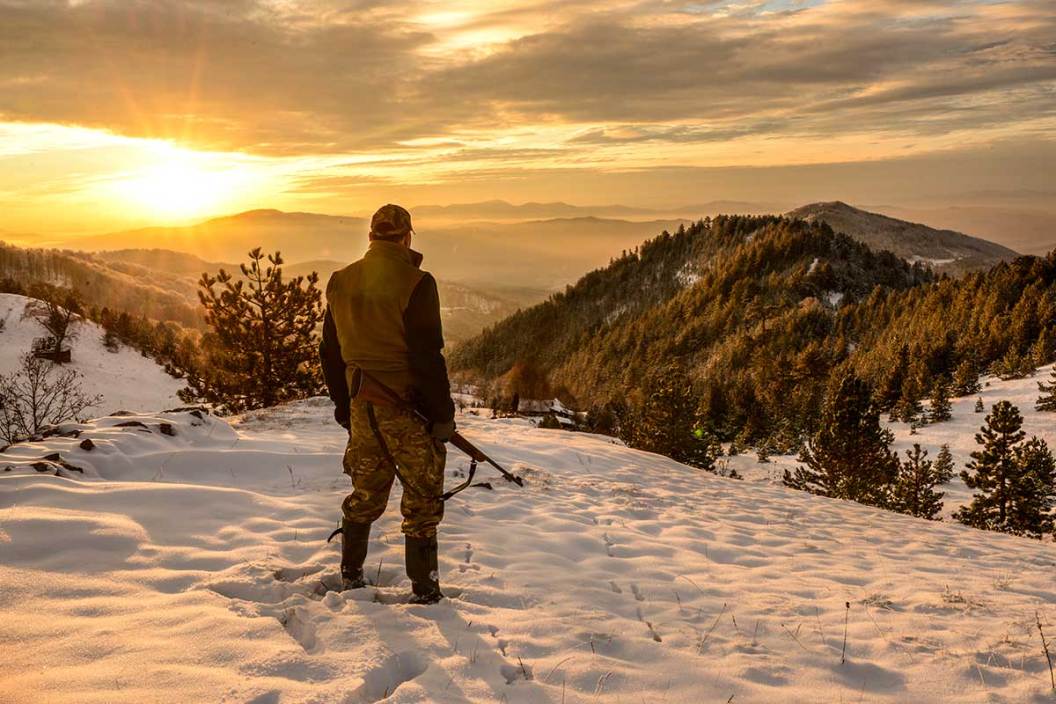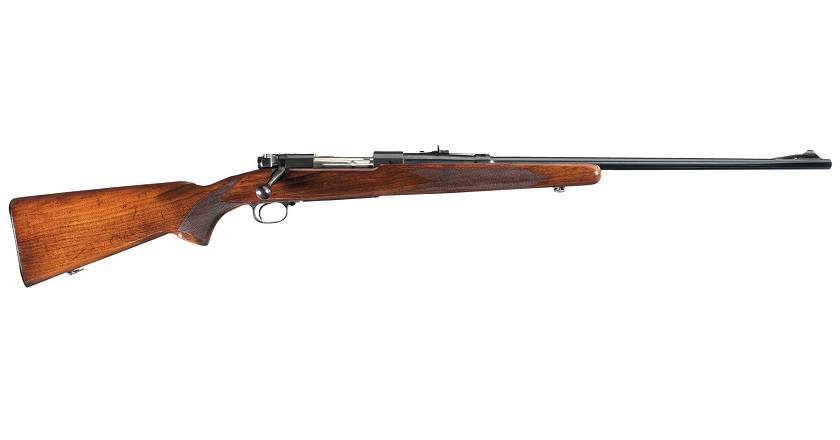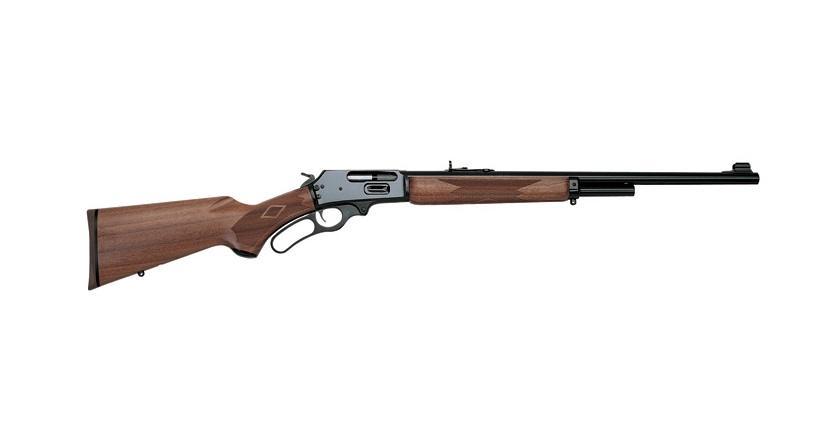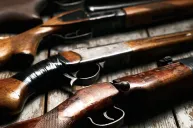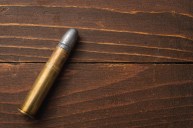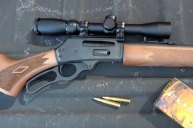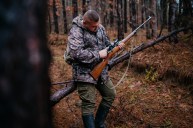Some guns have reputations that, for some reason, far outweigh their actual performance in the field.
There are many truly great guns specifically designed and marketed for hunting that are absolutely outstanding choices to take afield. However, there are also a number of highly overrated guns that don't live up to their glorified reputations in reality. Yet, somehow they still maintain a very devoted following.
Some of these overrated guns used to be great, but are now only popular among certain segments of the hunting and shooting populations due to their their past reputations or due to a certain amount of nostalgia or romanticism among their respective fan clubs. Others are great pieces for a gun collection or for taking to the shooting range, but aren't the best choices for a hunting gun.
In any case, virtually all of these rifles (I did not include any handguns or shotguns on the list) are extremely popular among certain segments of the hunting and shooting communities and their inclusion on this list will be considered almost sacrilegious by the respective fan clubs for each gun.
Don't take anything I say in this article personally. If I think your favorite rifle is overrated, I'm not attacking you personally. If that particular firearm works well for you and you like it, then by all means keep using it and don't worry about what I think.
Also, keep in mind that this is an article on the most overrated guns for hunting, not the most overrated guns for collectors, or the most overrated guns for shooting enthusiasts. Additionally, I'm not saying that any of the entries on this list are bad guns or that they don't work well in certain applications.
I am saying that the actual performance by these guns does not measure up to the hype that surrounds them (or their price tag in some instances). In almost every case, there are many other guns currently available that would be better suited for use as a hunting gun than any of the overrated guns on this list.
Scroll through to learn all about the most overrated guns for hunting, and why they aren't the best choices for most hunters.
Pre-1964 Winchester Model 70
When it was first introduced in 1936, the Winchester Model 70 was an instant hit among American sportsmen. It didn't take long for the rifle to develop a well-deserved reputation for reliability and accuracy and it quickly became the standard against which other rifles were judged.
Unfortunately, Winchester made a number of modifications to the iconic Model 70 rifle in 1964 to make it cheaper and easier to manufacture. Though many changes were made, the primary difference was that rifles produced after 1964 no longer had a Mauser-style "controlled round feed" bolt.
This change, combined with a general decline in the overall quality of craftsmanship, made the newer model rifle very unpopular among shooters and it was widely panned by critics as inferior to the Pre-1964 Model 70. As a result, Pre-64 Model 70s are in high demand among collectors and shooters all over the world and fetch fantastic (and some would say unreasonable) prices on the current firearms market.
Fortunately, FN Herstal began producing the latest version of the Winchester Model 70 in 2007 and the rifle is currently produced in most of the popular centerfire rifle cartridges these days like the .243 Winchester, .270 Winchester, 270 WSM, .30-06 Springfield, .300 Win. Mag and .375 H&H Magnum (just to name a few).
This incarnation of the legendary rifle was a dramatic improvement in quality over the other Post-1964 Model 70s and once again featured controlled round feeding. Among many other improvements, these new rifles feature outstanding triggers, great barrels and excellent bedding jobs. Not surprisingly, they are quickly becoming known for incredible accuracy and reliability deserving of the good Winchester Model 70 name.
Look, I get it: people love the Pre-1964 Model 70 and there are a lot of reasons why it's still an awesome rifle.
However, with a great utilitarian option available for hunters in the current production Model 70s, most of the value in a Pre-1964 Model 70 is derived from its value as a collector's item (especially if you have a particularly rare specimen, such as one chambered in .300 Savage, .35 Remington or .458 Win. Mag).
If you're a gun collector or just someone who loves old rifles, then the Pre-1964 Model 70 is perfect for you and there's nothing wrong with owning or hunting with one. On the other hand, if you just want a high-quality hunting rifle, then there's virtually nothing the Pre-1964 Model 70 can do that current production Model 70s can do (and maybe even do better) at a fraction of the price.
Post-2007 Marlin 1895
A cousin to the venerable Marlin 336, the big-bore Marlin 1895 chambered in .444 Marlin or .45-70 Government is commonly used by hunters pursuing large, tough game in North America. Nicknamed the "guide gun," the Model 1895 was especially well-liked among those who might have to deal with an angry brown bear, grizzly bear or moose at close range.
For many years, Marlin made great rifles suitable for deer hunting, brown bear hunting and almost everything in between.
However, Remington Arms acquired Marlin Firearms in 2007 and the quality control on their rifles (especially on the Model 1895) noticeably slipped. Shooters started complaining of problems with the wood on the stock, unreliable feeding and just generally poor quality work in general.
Though Remington claims to have fixed their quality control issues, the jury is still out on current production Marlin rifles at this point. Unfortunately, Remington has had its fair share of problems in recent years with the Remington Model 700 recall and the recent decision by the company to file for bankruptcy.
The older Marlin Model 1895 rifles are still fantastic for hunters wanting a good quality and hard-hitting, lever-action hunting rifle, but be cautious about buying one made after 2007.
Blaser R93
Quite common in Europe, the Blaser R93 also has a smaller, but still loyal following among hunters in the United States. The rifle is accurate, has a fast-cycling, straight-pull, bolt-action, and Blaser produces a line of interchangeable barrels that allow the owner to completely customize the rifle for a wide range of situations. For these reasons, it's not surprising that the Blaser R93 is so popular.
The rifle is not without a serious flaw, though, which is why it's on this list of overrated guns.
The most notable problem with the Blaser R93 is the fact there have been multiple cases of the bolt on an R93 unlocking when fired and striking the shooter in the face with disastrous results.
It's tough to separate fact from fiction with these incidents.
People in the Blaser fan club state that all of these episodes were the result of the shooter using poor quality handloads that greatly exceed the maximum safe pressure of the rifle.
Critics of the rifle counter that the shooters were using factory ammunition and that a rifle design that allows the bolt to fly straight backwards with such force, even when subjected to excess pressure, is inherently flawed.
Sure, all rifle actions will fail, sometimes spectacularly, when subjected to enough abuse. I've never seen or heard about a bolt actually flying straight back into the shooter's face except with the Blaser R93, though.
Interestingly enough, Blaser introduced the new R8 rifle a few years ago as an upgrade to the R93. Among other changes, the R8 features a completely reworked bolt that appears to be better designed than the one on the R93.
So far, the R8 has been well received and incorporates almost all of the features people liked about the R93.
Additionally, the new bolt appears to be a dramatic improvement over the one in the R93 and I have not heard of any incidents involving catastrophic bolt failure with the R8.
So, if you really like Blaser rifles and want to hunt with a straight-pull, bolt-action rifle, pass on the R93 and buy an R8 instead.
Any Rifle Chambered in .375, .378, .416 or .460 Weatherby Magnum
Founded by legendary hunter Roy Weatherby, Weatherby Firearms produces some particularly high-quality rifles like the Mark V and the Vanguard models.
Chambered in a wide variety of cartridges, including many common rounds like .270 Winchester, .30-06, and .300 Win Mag, these rifles are known for their accuracy, reliability and sturdy construction. For this reason, Weatherby rifles are understandably popular among big-game hunters.
Weatherby also designed a line of high-velocity magnum cartridges, like the .270 Weatherby Magnum, the .300 Weatherby Magnum, the .378 Weatherby Magnum and the .460 Weatherby Magnum. Weatherby Firearms has continued the tradition of high-velocity, flat-shooting cartridges when the company released the 6.5-300 Weatherby Magnum in 2016.
Now, there's nothing wrong with Weatherby rifles in general or the smaller-caliber Weatherby cartridges. However, the big Weatherby Magnum cartridges are, in my opinion, overrated.
The high velocity .257 Weatherby, .270 Weatherby, .300 Weatherby and .30-378 Weatherby are especially popular among hunters pursuing animals like elk, caribou, mule deer, mountain goat, bighorn sheep, and pronghorn who want a flat-shooting cartridge that's more resistant to wind drift and still hits hard at extended range.
However, that extra velocity comes and the associated performance improvements that speed brings comes at a cost of increased recoil and muzzle blast. While there are many hunters who can shoot the smaller Weatherby cartridges accurately and take advantage of their slight edge in long-range performance, this is often not the case with the larger Weatherby cartridges like the .375, .378, .416 and .460 Weatherby Magnums.
Those massive cartridges have such heavy recoil and so much muzzle blast that it is a rare hunter who can really handle them well.
Due to the fact so few hunters can accurately shoot the really big Weatherby Magnums, they have developed a nasty reputation among African professional hunters, some of whom refer to them as "Wounda-bees" due to the propensity of Weatherby armed hunters to wound animals because of poor shooting.
For example, on page 96 of "Africa's Most Dangerous" (which is a fantastic hunting book by the way), Kevin Robertson told the tale of a visiting hunter who took several shots at a cape buffalo with a .460 Weatherby Magnum. When it was all over, Robertson joked that the buffalo was in better shape than the hunter, who had two black eyes and a bloody nose from the recoil of his rifle.
Yes, that's an extreme example to be sure. But what about the hunter who can handle that recoil and accurately shoot one of the big Weatherby Magnums?
Well, most shots on the big animals that necessitate the use of larger caliber cartridges (like cape buffalo) are taken at short range where the high velocity and flat shooting characteristics of the Weatherby Magnums aren't much of an advantage. In fact, the high velocity of these cartridges might even prove to be a disadvantage since extremely high impact velocities often result in bullet failure, erratic terminal performance, and excessive amounts of blood shot meat.
Cartridges like the .270, .300 and .30-378 Weatherby Magnum are all well suited for hunters who want a flat shooting cartridge for taking long-range shots at animals like elk and pronghorn. If that's your cup of tea, then by all means use those cartridges when you go afield.
Even so, exercise caution when hunting (especially for dangerous game) with the big Weatherby Magnum cartridges. There are many other proven cartridges out there (like the .375 H&H, .416 Rigby and .458 Lott) that are both easier to handle and often more effective on the really big animals like buffalo and elephant.
Holland & Holland Double Rifle
Double-barreled firearms first became prevalent during the days of the muzzleloader. Having the ability to quickly fire two shots without going through the lengthy reloading process required of a muzzleloader was a great advantage for hunters.
Breech-loading double rifles, especially those chambered in big-bore cartridges like the .450/400 and .577 Black Powder and Nitro Express rounds, remained in widespread use during the late 1800s and early 1900s among hunters in India and Africa pursuing large species of dangerous game like tiger, buffalo and elephant.
These rifles really proved their worth during close-range encounters with these animals where having a nearly instantaneous follow-up shot could be the difference between life and death.
Holland & Holland rifles were (and still are) regarded as the the cream of the crop among double rifles. Known as the rifle equivalent of a Rolls Royce, they are fashionable and have historically been the most popular rifles used by the rich and famous. Frederick Selous, Theodore Roosevelt, and numerous members of the British Royal Family have used Holland & Holland double rifles on safari.
Holland & Holland advertises that all of their firearms are hand made by master gun makers and that 850 man-hours of work go into making each of their rifles in order to ensure that they are the finest guns that money can buy.
Their double rifles are also often custom made to the exact size specifications of the hunter who will be using them. This is to make sure that the rifle fits the shooter and points perfectly. For these reasons, Holland & Hollands are among the most reliable and "best-feeling" rifles available anywhere in the world.
That being said, Holland & Holland double rifles (really all doubles for that matter) have a few inherent disadvantages.
The first disadvantage is the rifle's small magazine capacity. Yes, double rifles allow the hunter to take a very fast follow-up shot. However, a well-trained hunter with a good quality bolt-action rifle can get off an aimed second shot nearly as fast as with a double rifle. Combine that with the fact that a modern bolt-action rifle can hold up to 5 big bore cartridges in the magazine, and a bolt-action rifle has a clear advantage if more than two shots are required.
The second disadvantage is that a double rifle is a specialized tool and, like any highly specialized tool, it struggles in applications outside of its intended use. No other rifle in the world can compare to a big bore double rifle when it comes to stopping large, dangerous game at close range. A good double is handy and points almost as well as a fine shotgun, which makes it ideal for stopping an angry buffalo or elephant at ranges measured in feet.
While it would be wrong to say double rifles are inaccurate, there are many other rifles that are much better choices than a double rifle for shooting at targets further away than 50-75 yards.
These rifles are also typically quite heavy, which is necessary to dampen the fierce recoil of really big cartridges like the .500 and .577 Nitro Express. This makes them much easier to shoot, but a 13-pound rifle is pretty darn heavy and will quickly wear down most hunters during the 10-20 miles of walking per day that may be necessary on an elephant hunt.
The other big disadvantage that's most apparent with Holland & Holland double rifles is they are incredibly expensive. Prices start around $100,000 and go up fast from there.
Sure, they're great guns, but a large portion of that cost is paying for the name "Holland & Holland."
Most hunters (myself included) have no problem paying extra for the quality that comes with a good brand name. However, I'm not convinced you're really getting enough extra performance in this case to justify the incredible cost of these rifles.
For instance, a CZ 550 Safari Magnum chambered in .458 Lott is a capable rifle at both short range and out to about 200 yards, is very reliable, holds six cartridges (five in the magazine and one in the chamber), weighs less than 10 pounds with a scope, is an excellent dangerous game-stopper, and can be purchased for less than $2,000. In many respects, it compares favorably to a 13-pound Holland & Holland double rifle that costs over 50 times as much.
Is paying that much more money for the Holland & Holland name on a rifle that is a slightly better short-range stopper and is extremely reliable, but worse in almost every other regard, really worth it?
For the vast majority of hunters, I would say no.
Even when talking about someone who often needs to deal with stopping a large and angry animal at close range, like a Professional Hunter guiding elephant and cape buffalo hunts in Africa, there are several other more reasonably priced double rifles that still perform very well at a fraction of the cost of a Holland & Holland.
For one thing, there comes a point where a rifle is just too valuable to take hunting for fear of damaging, destroying, or losing it somehow. You've got to have some serious money to drop $100,000-200,000 on a rifle and then take it on a hunt for dangerous game in the African bush.
After all, there is a reason why Professional Hunters that have double rifles normally use Merkel, Krieghoff, and Heym rifles instead of Holland & Hollands.
For that reason, the Holland & Holland double rifles are much better suited for a gun collection, for taking to the range, or even as an investment than for actually taking afield on a hunting expedition.
What do you think of our choices for the most overrated guns for hunting? Did we miss any?
Like what you see? You can read more great articles by John McAdams on the Big Game Hunting Blog. Follow him on Facebook & YouTube and subscribe to his show: the Big Game Hunting Podcast.
NEXT: THESE ARE THE MOST UNDERRATED RIFLE CARTRIDGES FOR HUNTING
